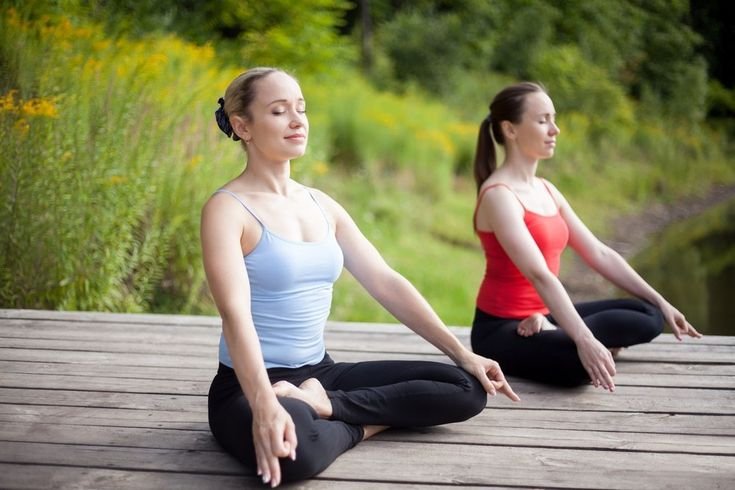Clavicular breathing is the final phase of ribcage expansion, happening after thoracic inhalation is complete. In this stage, the upper ribs and collarbone are lifted by the muscles in the neck, throat, and chest to take in a bit more air. This focuses on filling the upper part of the lungs and requires maximum effort during inhalation. It’s typically used during extreme physical exertion or when dealing with breathing issues like asthma.

How to Practice Clavicular Breathing:
- Lie down in Shavasana and relax your entire body.
- Focus on your natural breathing for a few moments, paying attention to the sides of your chest.
- Practice thoracic breathing (chest breathing) for a few minutes.
- Inhale deeply, fully expanding your ribcage.
- Once your ribs are fully expanded, inhale a bit more to feel the expansion in the upper lungs, near the base of your neck.
- Let your shoulders and collarbone rise slightly.
- This will take some effort, so be mindful.
- Slowly exhale, releasing the tension first from your upper chest and lower neck, then relaxing the rest of your ribcage.
- Repeat for a few breaths, observing how this breathing feels.
- Afterward, relax and return to your natural breathing pattern.
- Gently bring your awareness back to your whole body.
- Notice your surroundings and slowly open your eyes.
Proper practice of clavicular breathing is essential for advancing in Pranayama and preparing for Yogic Breathing.
Taking Your Yoga Practice Further
If you’re looking to deepen your yoga practice, consider completing a yoga teacher training program. This type of training covers Pranayama, asanas, and other key yoga elements, helping you gain professional expertise.
Advance Your Practice at Yoga India Foundation
Want to explore asanas, Pranayama, and meditation more deeply? Yoga teacher training at the Jaipuryogae can take your practice to the next level. Learn from experienced teachers with Master’s and PhD degrees in yoga and Ayurveda.
FAQs for Clavicular Breathing:
What is clavicular breathing?
Clavicular breathing is a type of breathing that involves raising the upper chest, collarbone, and shoulders to draw air into the upper lobes of the lungs. It is the final stage of ribcage expansion after thoracic breathing.
When is clavicular breathing used?
Clavicular breathing is typically used during moments of extreme physical exertion or when someone has breathing difficulties due to conditions like asthma or obstructive airway diseases.
How do you practice clavicular breathing?
Clavicular breathing can be practiced by lying down, relaxing the body, and focusing on inhaling deeply to fully expand the ribcage. After full expansion, you take in a little more air, allowing the collarbone and shoulders to rise slightly.
What are the benefits of clavicular breathing?
Clavicular breathing helps increase lung capacity and improves oxygen intake during intense physical activity. It’s also beneficial for those working on advanced Pranayama techniques in yoga.
Is clavicular breathing important in yoga?
Yes, clavicular breathing is important for progressing in advanced Pranayama practices and is a key element in mastering yogic breathing.
What muscles are involved in clavicular breathing?
Clavicular breathing involves muscles in the neck, throat, upper chest, and sternum to lift the collarbone and upper ribs for deeper inhalation.
Is clavicular breathing safe for beginners?
While clavicular breathing can be practiced by beginners, it requires proper guidance and focus, especially for those with respiratory issues. It’s typically more relevant for advanced yoga practitioners.
